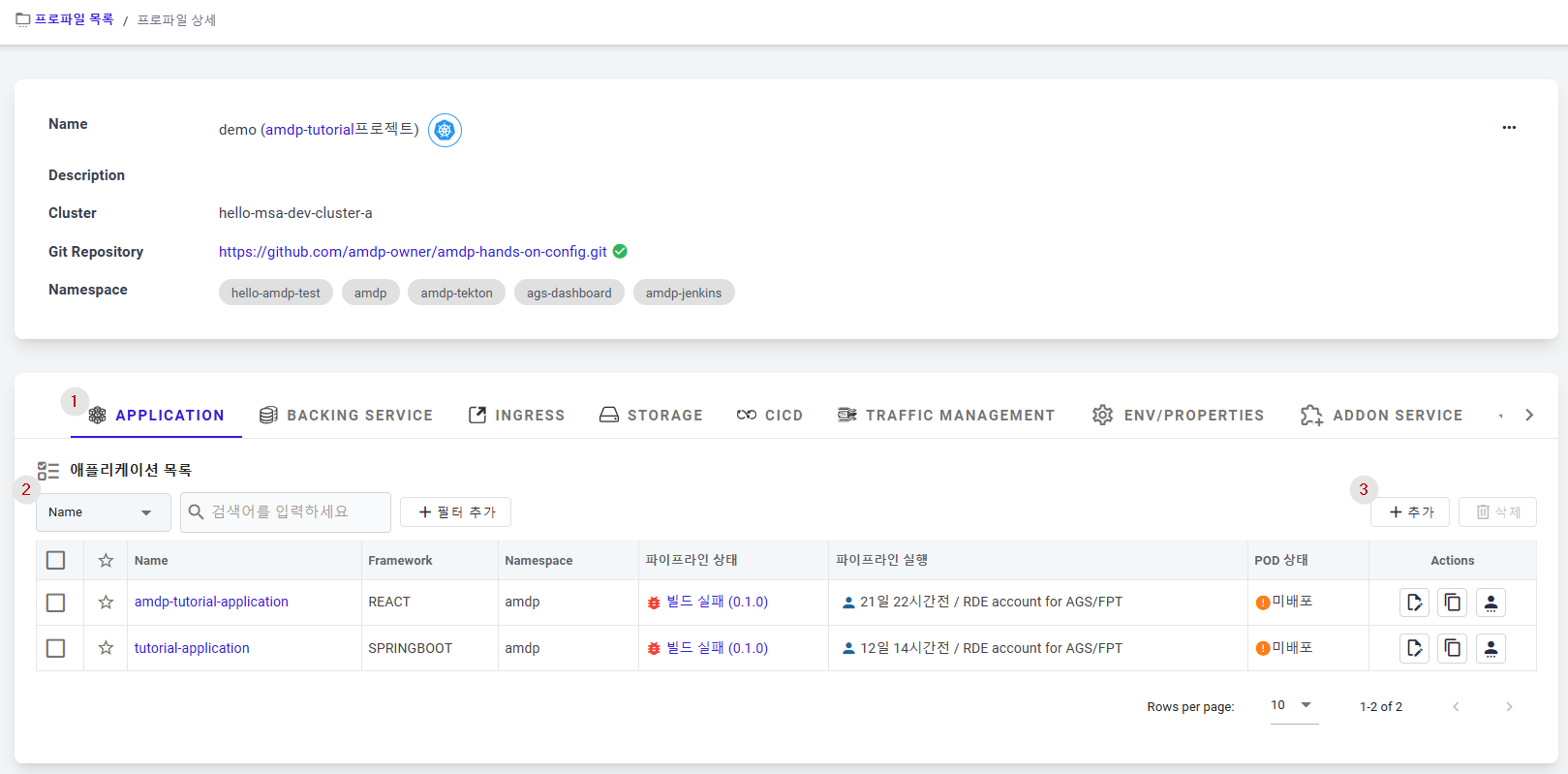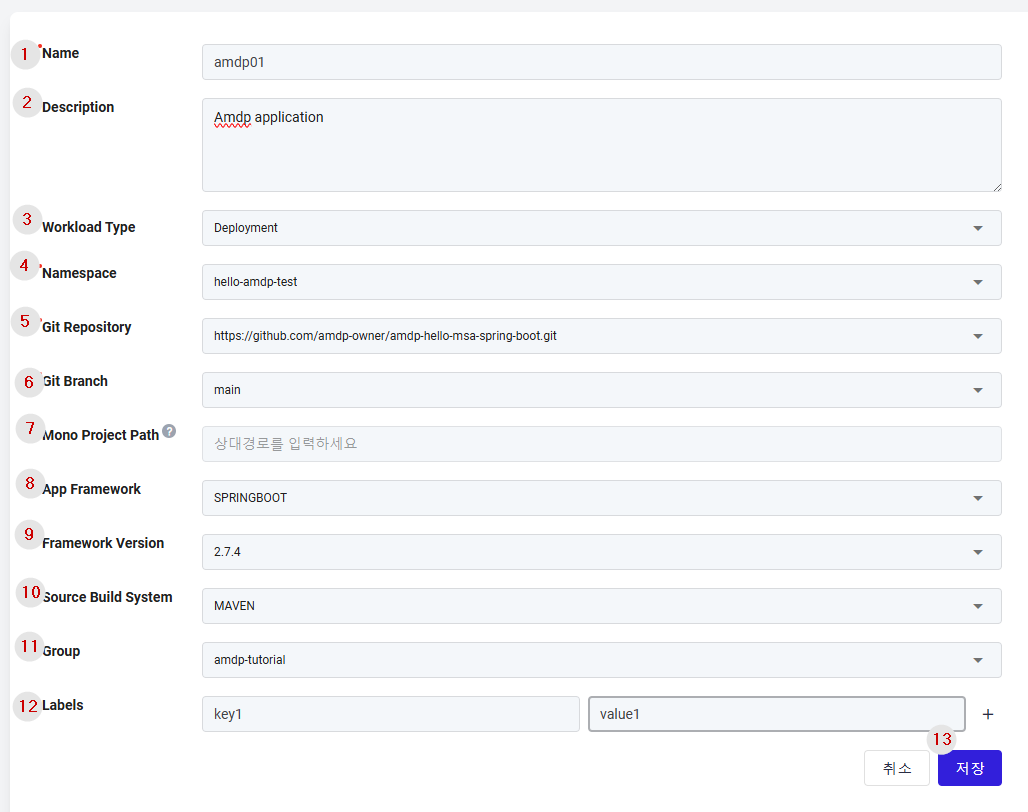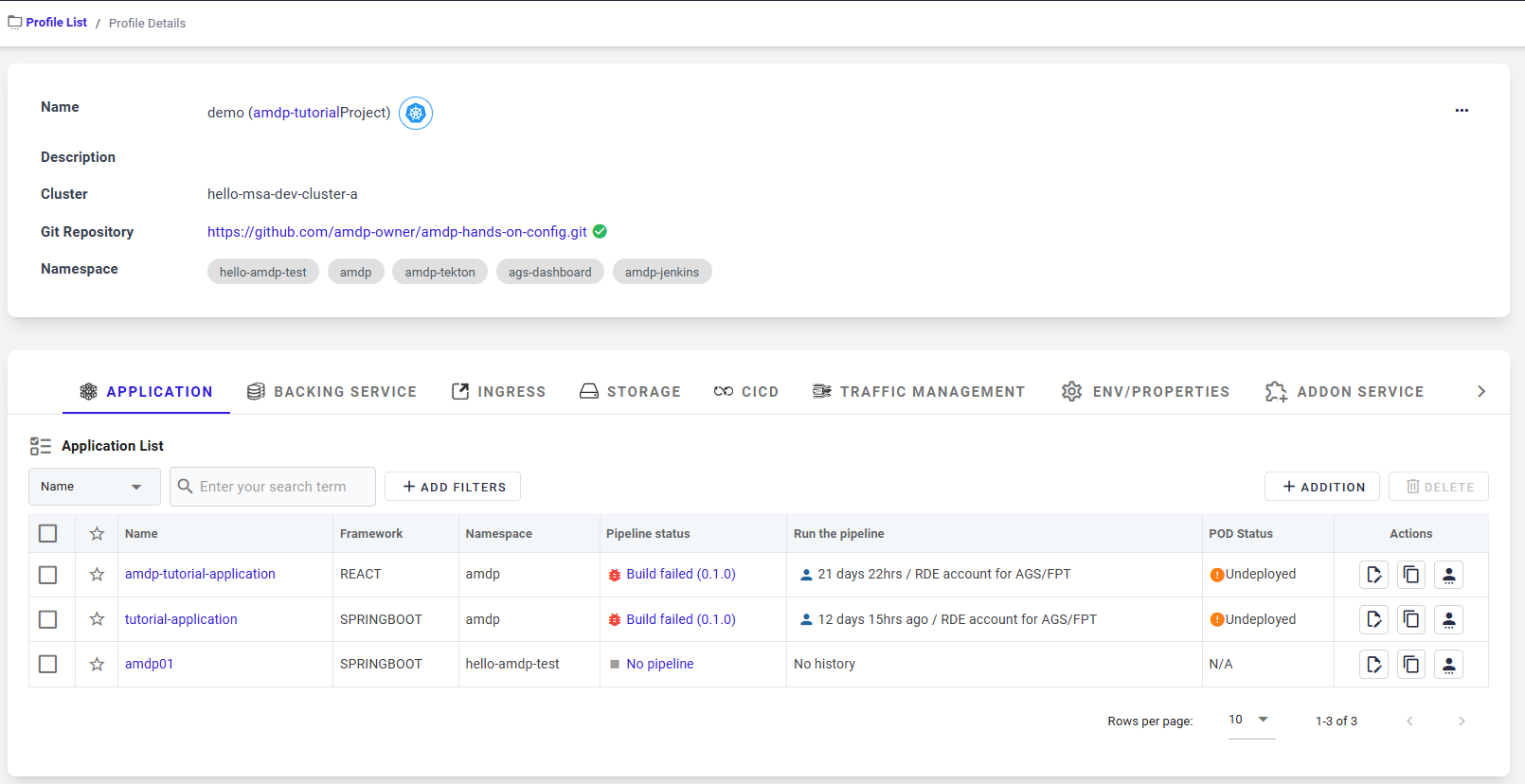Application Creation
Application List
In the profile detail page, you can check the registered application information in a list by selecting the 'Application List' tab.

① APPLICATION: A tab menu to view the application list. If you have moved to other tabs and want to view the application list again, select this area. ② Information about the application list:
- Name: The name of the application. Selecting this information redirects to the
- 'Application Basic Information' screen.
- Description: Description of the application.
- Framework: The type of framework used in the application (e.g., SPRINGBOOT, VUEJS, etc.).
- Namespace: Information about the Namespace specified for application deployment. Deployment to the cluster environment via the pipeline is only possible if at least one Namespace is selected.
- Deployment Status: Provides information on the deployment status
- Undeployed, Normal, Abnormal of the application in the cluster.
- Undeployed: The application is registered but not yet progressed through the CD stage of the deployment pipeline.
- Normal: The application's deployment pipeline has started correctly.
- Abnormal: The application's deployment pipeline has not started correctly.
- Pipeline: Provides the status information of the application's deployment pipeline. If configured, you can select the icon to move to the deployment pipeline screen.
- Pipeline Execution Time: Provides information on the execution time of the most recently executed deployment pipeline.
- Action: Provides functions like Edit, Delete, and Project Permission Movement.
③ Add/Delete Applications. Add and Delete buttons are displayed depending on the Project Permissions.
- Add: Add an application.
- Delete: Delete the selected applications.
Adding an application
By click on button ADD, an application is added by entering basic information (name, description, etc.) and basic deployment settings for CI progression through the Deployment Pipeline on the following screen:

① Name: The representative name of the application; it must be unique within the profile.
② Description: Write a description for the application.
③ Workload Type: Selects the type (Deployment, Statefulset) used when deploying the application in the cluster.
④ Namespace: Registers the Namespace managed in the cluster environment. It is managed by selecting from the list of Namespaces registered in the profile, and the application is deployed using this information.
- Deployment: Uses the Deployment type provided by the cluster. Most applications choose this value.
- Statefulset: Uses the Statefulset type provided by the cluster. Used for applications requiring unique network identifiers, persistent storage, sequential deployment, and scaling.
⑤ Git Repository: Registers the Git information managing the application's development source. Select from the information registered in the Microservice Git List in project management.
⑥ Git branch: Registers the Branch information managed in the Git of the development source. This information is selected from the list of branches previously registered in Git and is used in the CI stage of the Deployment Pipeline .
⑦ Mono Project Path: Used in a Mono Project structure where multiple applications are configured in a single Git. Registers the relative path of the application within Git.
⑧ App Framework: Provides information about the framework used by the application. Based on this information, suitable settings are provided in Basic Settings and Expert Settings , and it is utilized in the CI stage of the Deployment Pipeline.
- SPRINGBOOT: For Java-based applications using the Spring Boot framework.
- VUEJS: For frontend applications using the vuejs framework.
- REACT: For frontend applications using the react framework.
- NEXACRO: For frontend applications using Nexacro commercial services.
- DOCKER: For applications that can be deployed to a cluster and do not fall under the listed frameworks, requiring no additional configuration injections
⑨Framework Version: Selects the version of the framework used by the application. If the actual version used is not in the list, select a compatible version or the default value.
⑩ Source Build System: Selects the type of build system to be used for building the development code.
⑪ Labels: Registers additional labels besides the labels (amdp.io/profile, amdp.io/app) that are automatically injected into the application. Labels are registered and managed as Labels provided by the cluster.
⑫ Button to cancel or save the data.
By clicking on button Save, the new application is created and displayed on the Profile list screen:
